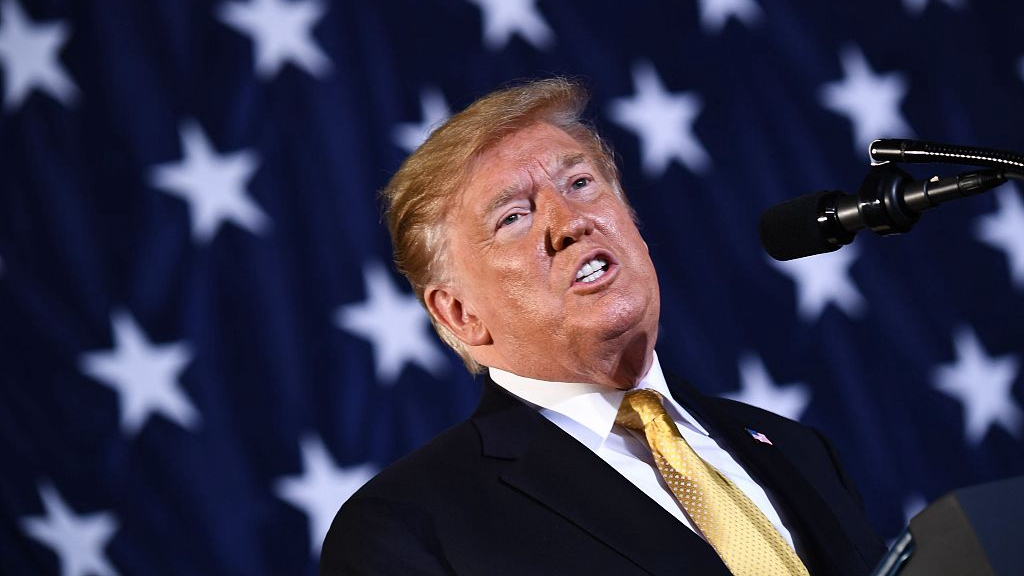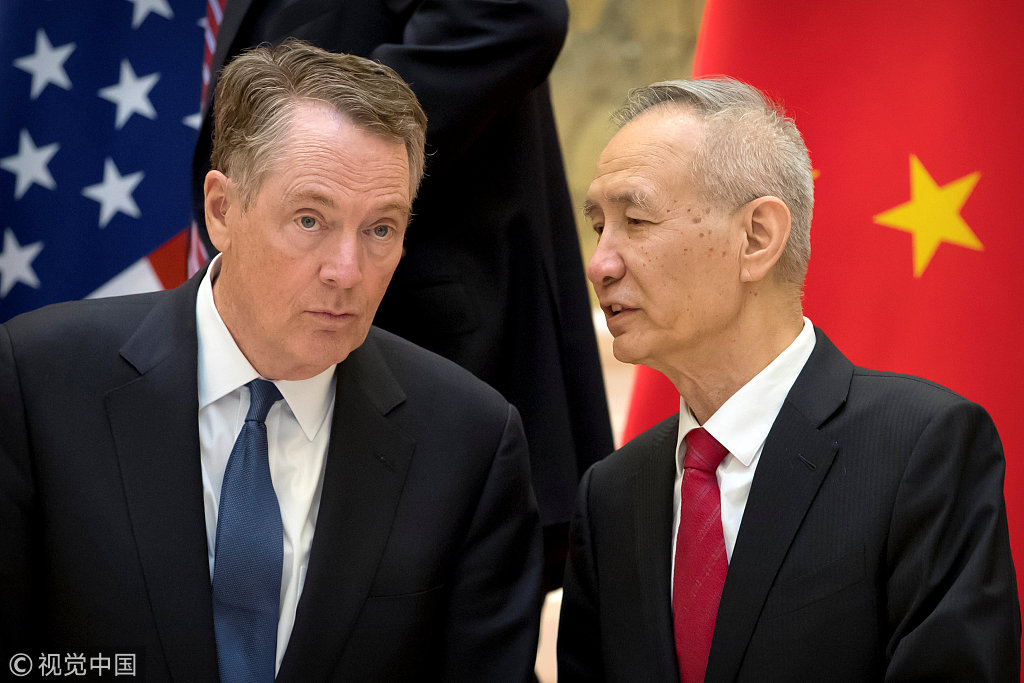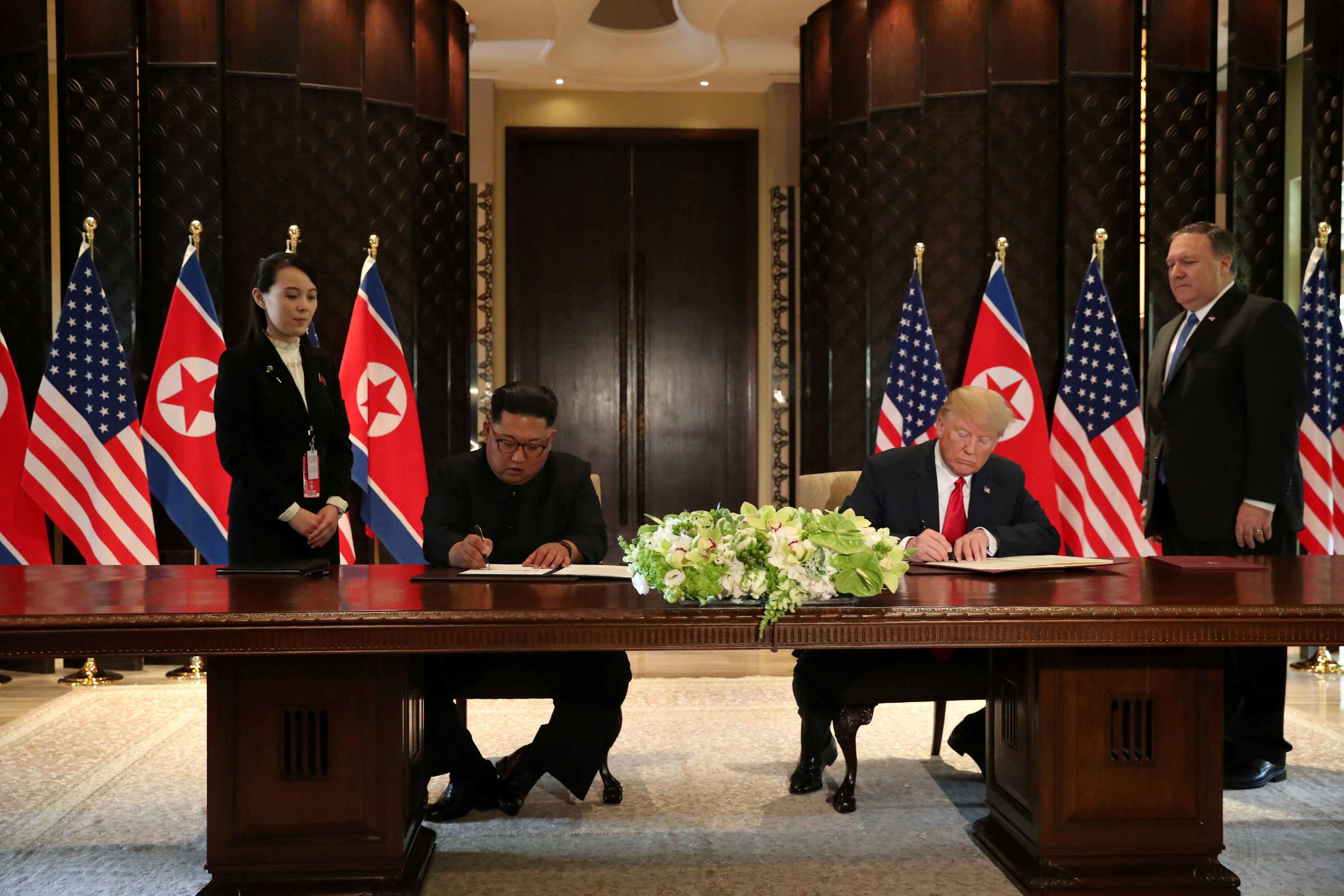
Opinion
15:46, 02-Jun-2019
An insight into Trump's flip-flopping on China-U.S. trade
Liu Jianxi

Editor's Note: Liu Jianxi is an opinion editor at CGTN. The article reflects the author's views, and not necessarily those of CGTN.
The United States flip-flops faster than turning pages. After Donald Trump took office, the U.S. has repeatedly demonstrated to the world how good it is at flip-flopping.
At the end of 2017, China and the U.S. signed an economic and trade cooperation agreement worth 253.5 billion U.S. dollars; four months later, the U.S. threatened to impose tariffs on China on the grounds of the 301 investigation report.
On May 19 last year, China and the U.S. reached a consensus on "not fighting a trade war;" just 10 days later, the U.S. openly wielded a tariff stick at China.
On May 5 this year, the U.S. again ignored the outcomes of previous trade talks and suddenly announced that it would raise tariffs on 200 billion U.S. dollars' worth of Chinese exports to the U.S. from 10 to 25 percent.
As the most powerful country in the world, the U.S. makes unreasonable demands. Arrogant and high-handed, it flagrantly resorts to rogue means in its pursuit of self-interest. At the China-U.S. negotiating table, the U.S. side made the best use of the "extreme pressure" trick commonly used in business, constantly testing the bottom line of the other side, and in the process went back on its promises and repeatedly raised the asking price.
It has been the hallmark of the Trump administration to push the other side to compromise through extreme pressure and go back on its word.
Hawk vs. dove battle: the catalyst for flip-flopping
The differences within the White House are the catalyst for the flip-flopping of the United States. Under the "America First" policy, hawks such as U.S. National Security advisor John Bolton, Secretary of State Mike Pompeo, and Trade Representative Robert Lighthizer have got involved one after another in U.S. security and economic decision-making.
Since China and the U.S. got bogged down in trade last year, the influence of those taking a moderate stance on China within the Trump team has declined significantly, with those hawkish on trade and security gaining the upper hand.

U.S. Trade Representative Robert Lighthizer (L) with Chinese Vice Premier Liu He at Diaoyutai State Guesthouse in Beijing, February 15, 2019. /VCG Photo
U.S. Trade Representative Robert Lighthizer (L) with Chinese Vice Premier Liu He at Diaoyutai State Guesthouse in Beijing, February 15, 2019. /VCG Photo
Although the China-U.S. trade frictions are the result of a combination of various factors, hawks in Washington insist that China is "the hostile force behind the economic war" and insist on a strong attitude towards China.
The fact that the White House is becoming more hawkish has undoubtedly made it worse for the already difficult China-U.S. trade talks, and it is not surprising that the U.S. has shown a wavering attitude at the negotiating table.
Donkey-elephant dispute: the direct trigger for flip-flopping
The complex domestic political situation in the U.S. is the direct trigger of the "flip-flopping" of the United States. Less than two years to go before the next presidential election, both Democrats and Republicans stood ready to cross swords with each other.
In order to win the votes of the lower middle class in swing states, U.S. politicians have turned their attention to China, using the issue of China-U.S. trade frictions as a "weapon" to attack their political opponents.
Trump, bent on seeking re-election, is focusing his firepower on the former Democratic administration for being soft on China. In this context, raising taxes on Chinese goods is the best coat for the White House boss to package himself as a spokesman for hardliners on China.
DPRK nuclear issue: an exterior contributor for flip-flopping
Moreover, businessman-turned-president Trump has continued his "shrewdness" and "pragmatism" in politics. He is well aware of China's influence over the DPRK nuclear issue and tries to soften his position on China in exchange for Beijing's help on the issue. But once the DPRK issue is eased, he quickly tears down his commitments to China.

U.S. President Donald Trump and DPRK leader Kim Jong Un sign a joint document after their summit at the Capella Hotel in Singapore, June 12, 2018. /Reuters Photo
U.S. President Donald Trump and DPRK leader Kim Jong Un sign a joint document after their summit at the Capella Hotel in Singapore, June 12, 2018. /Reuters Photo
After Trump held his first "historic" summit with DPRK leader Kim Jong Un in Singapore last June, the U.S. seemed to think that it was fully capable of solving the DPRK nuclear issue on its own and no longer needed the help of China. In this context, the promise of "not fighting a trade war" was brazenly torn up.
In February, after the second summit between Trump and Kim went nowhere, Trump frequently sent trade representatives to China to speed up bilateral trade talks. Thus it can be seen that the DPRK issue is directly influencing the White House's position in the China-U.S. trade talks, and the businessman's "pragmatism" in Trump has been completely exposed.
As a superpower, the U.S. has repeatedly gone back on its promises. This has tremendously undermined the credibility and the international reputation of the United States.
The tariff war against China launched by the U.S. not only violates the rules of the World Trade Organization, but also challenges multilateralism; it not only harms China's legitimate rights and interests, but also damages the common interests of the U.S. and the world as a whole.
In the disguise of "America First," Washington's flagrant hegemony in its foreign relations will eventually backfire and is doomed to failure.
(If you want to contribute and have specific expertise, please contact us at opinions@cgtn.com.)

SITEMAP
Copyright © 2018 CGTN. Beijing ICP prepared NO.16065310-3
Copyright © 2018 CGTN. Beijing ICP prepared NO.16065310-3